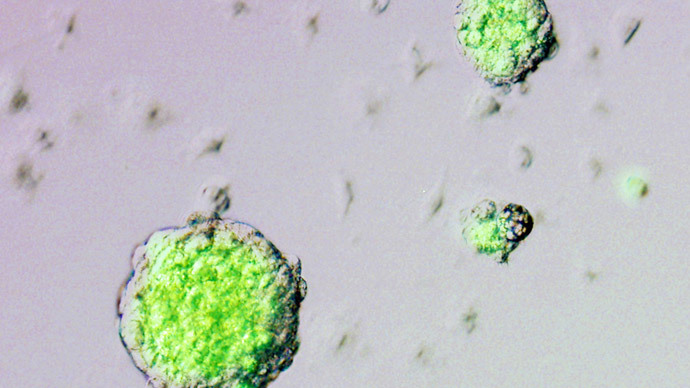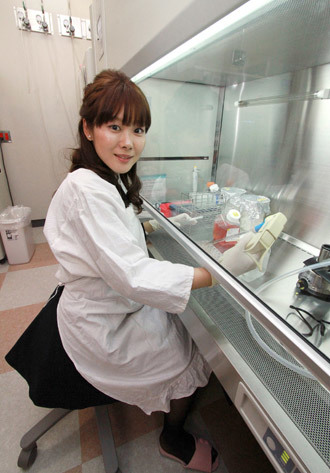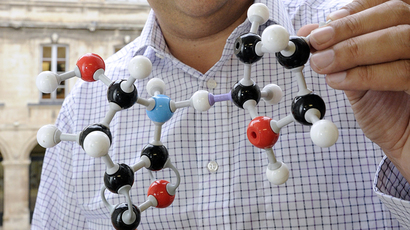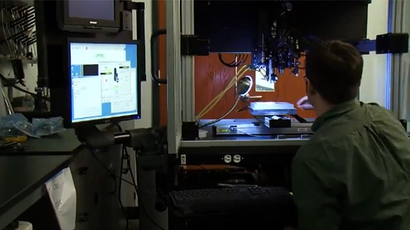Japanese scientist calls for own ground-breaking stem cell study to be retracted

One of the co-authors of a recent study promising to revolutionize the synthesis of stem cells has called for the entire research to be retracted after he reviewed the test data and reportedly found multiple problems, including “questionable images.”
One of the co-authors of the joint Japanese/American research, Professor Teruhiko Wakayama of Yamanashi University, has decided to carefully review his team’s study on the creation of stem cells (cells that can grow into any type of organ or tissue). This followed claims by science colleagues that the erroneous image data was used for the article published in the journal Nature.
“I have lost faith in the paper. Overall there are now just too many uncertainties about it. I think we have to wait for some confirmation,” Wakayama told NHK. “To check the legitimacy of the paper, we should retract it, prepare proper data and images, and then use those to demonstrate, with confidence, that the paper is correct.”
"When conducting the experiment, I believed it was absolutely right," Wakayama said, adding that if it turns out to be wrong, it would be essential to make it clear why a thing like that could have happened.
The leader of the research team, Japanese researcher Haruko Obokata together with US scientists announced a breakthrough in January: a cheap way to produce valuable embryonic-like stem cells without having to terminate any embryos. The study promised to usher in a new era in stem cell biology, as the prominence of stem cell use grew with the realization of just how much we could accomplish in the way of battling a huge variety of diseases. This is because of the cells’ ability to mimic other cells in the body.

What Obokata from the RIKEN Center for Developmental Biology in Japan and researchers from the Brigham and Women’s Hospital (BWH) allegedly found at the time was that an adult cell (also known as a “somatic” cell) had the potential to transform into a copy of an embryonic stem cell as a result of a simple process. The scientists subjected cells to external stress, "almost to the point of death”, by exposing them to various hostile environments, for instance, acid or low oxygen. Within a few days the cells (called Stimulus-Triggered Acquisition of Pluripotency, or STAP, cells) survived and recovered from the stressful stimulus by naturally reverting into a state that is equivalent to an embryonic stem cell, the researchers said.
Within weeks of its publication on January 29, the study faced criticism of irregularities in visual data and allegedly duplicated imagery. Added to that was the problem some scientists were having trouble reproducing the ‘simple’ technique promised by researchers doing the study.
Wakayama was in charge of the part of the experiment that checked if the cells had acquired pluripotency – the ability to shift properties to those resembling an embryo cell. He said a change in a specific gene was to be proof. He pointed out that after RIKEN disclosed detailed procedures for making STAP cells, in the newly released procedures RIKEN says this change didn't take place, NHK reported.
RIKEN said it has launched an independent investigation in the content of the paper. Nature has responded promptly with its own probe. In an e-mailed statement, the journal said: "Issues relating to this paper have been brought to Nature's attention and we are conducting an ongoing investigation. We have no further comment at this stage."
But not all believe that mistakes were made; among them is Hitoshi Niwa, who also contributed to the article in Nature sees the hiccups with the picture data as only “minor mistakes,” according to Japanese media. Joining him is Charles Vanati, a tissue engineer with Harvard Medical School and BWH, who told The Wall Street Journal that “based on the information I have, I see no reason why these papers should be retracted… it would be very sad to have such an important paper retracted as a result of peer pressure, when indeed the data and conclusions are honest and valid.”














